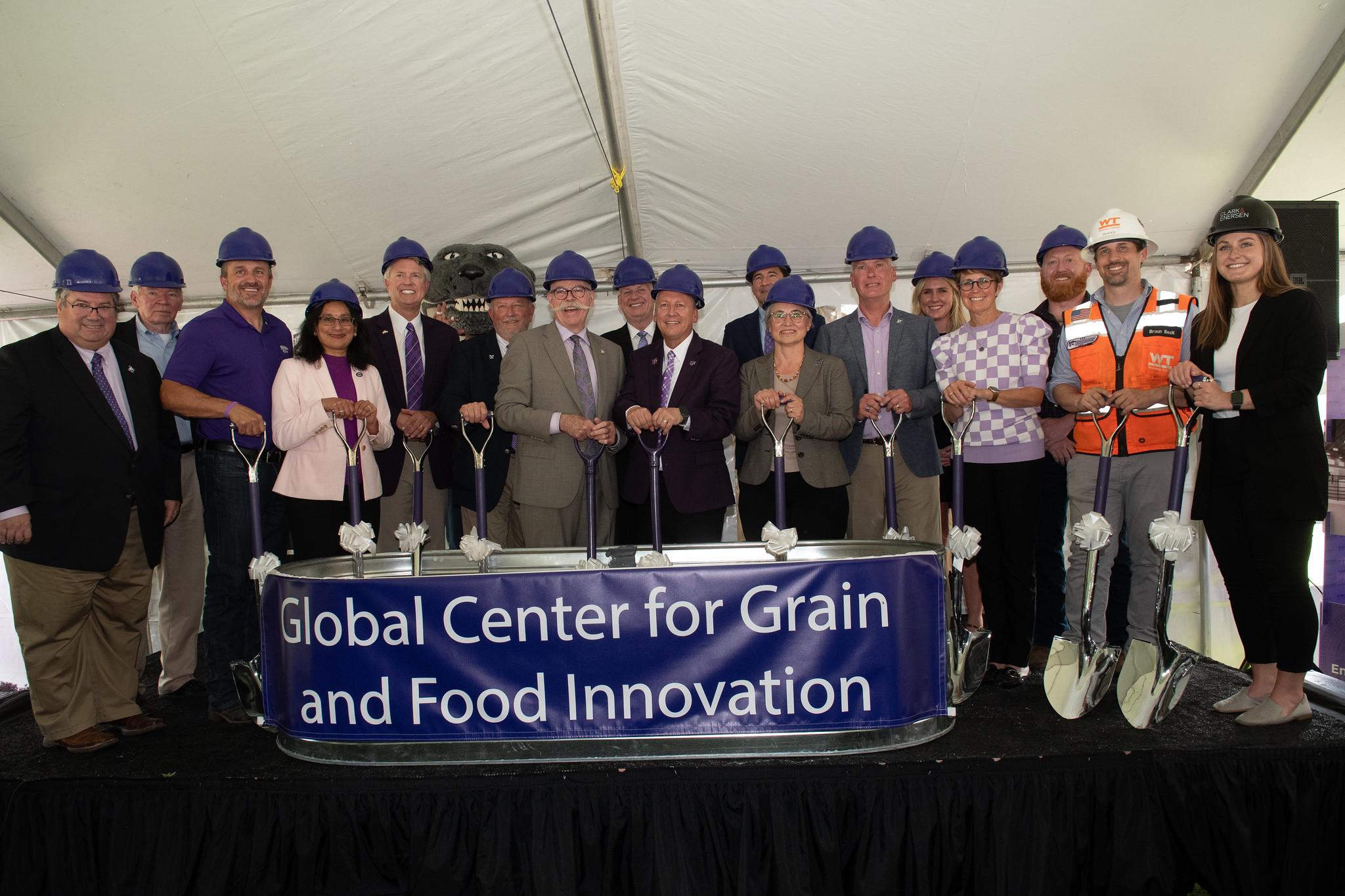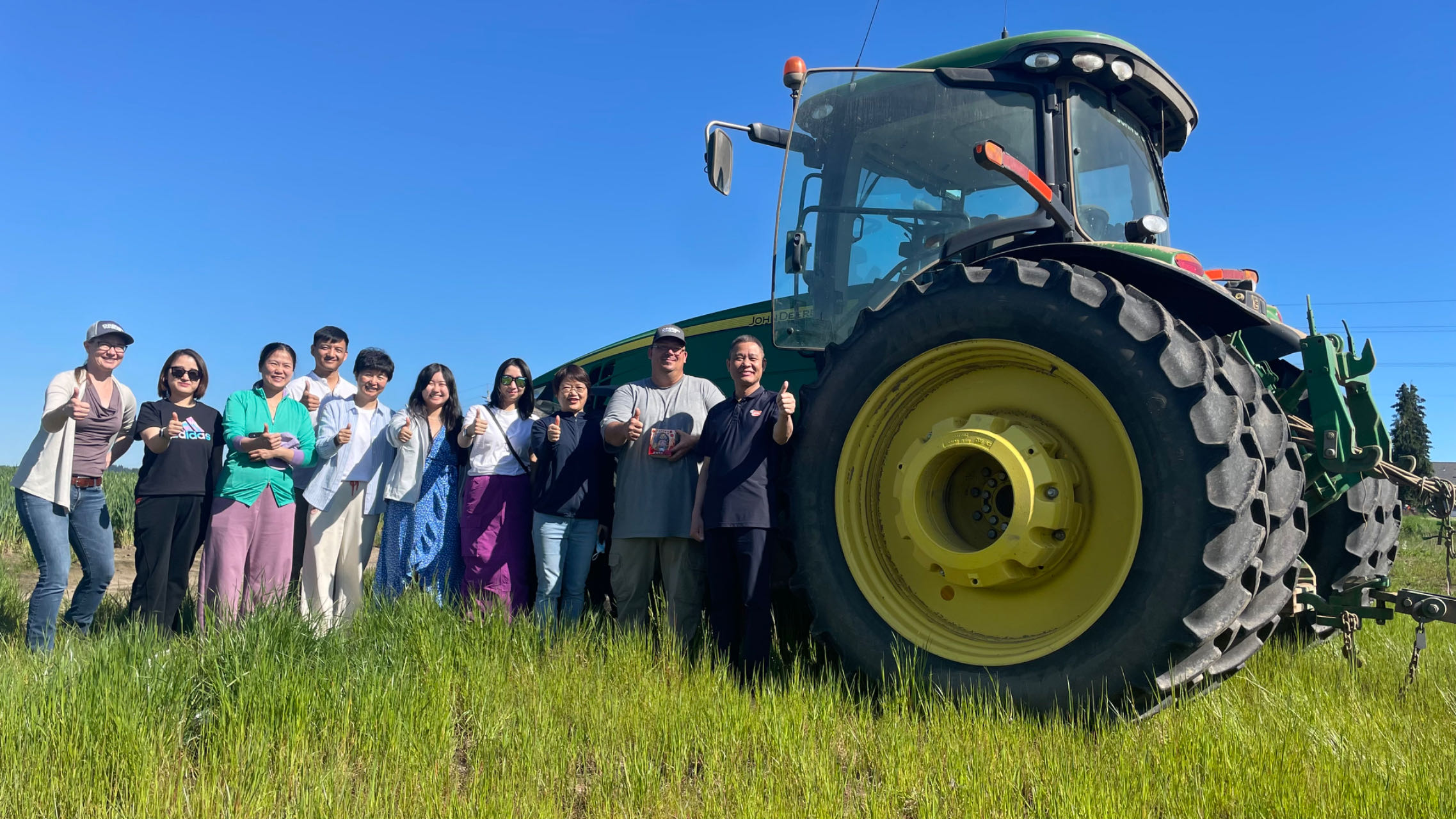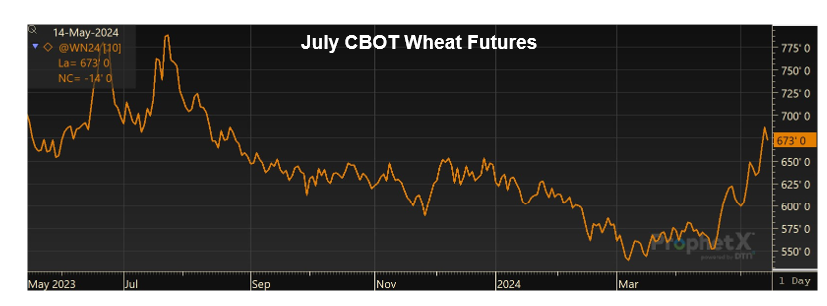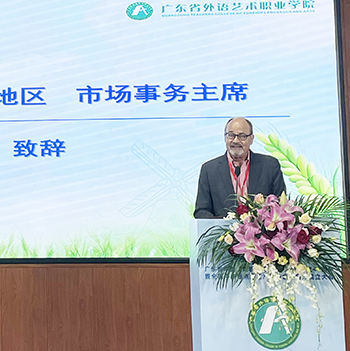News and Information from Around the World Wheat Industry
Speaking of Wheat

“As most of you know, I am retiring May 31, 2024. As I prepare to embark on a new journey, I wanted to take a moment to express my heartfelt gratitude to each and every one of you. It was wonderful working within the USW family, as I grew up with this family, and it has been an incredible experience that I will always cherish. I am truly grateful for the support and friendship that I have received … during my almost 39 years of service. The memories will always hold a special place in my heart. I am so blessed to have you all in my life for so many years.”
– Ms. Mina El Hachimi, Senior Administrative Consultant, U.S. Wheat Associates (USW) Casablanca. Happy retirement, Mina!
K-State Welcomes Next Grain Science Department Head
Kansas State University College of Agriculture has announced that Joseph Awika (photo, right) has accepted the position of department head of grain science and industry, and director of the IGP Institute, a USW educational partner. Awika joins K-State from Texas A&M University, where he has been food science and technology department head. He earned his undergraduate degree at Egerton University, Kenya, and a doctoral degree in food science and technology from Texas A&M. Read more here.
Canadian Gene-Edited Wheat Research
Agriculture Canada has announced it is testing gene-edited wheat in a greenhouse at its Lethbridge (Alberta) Research and Development Centre. The goal is to produce spring wheat lines with greater ability to receive and use sunlight, according to an Alberta Farmer Express article. Gunter Jochum, president of the Western Canadian Wheat Growers Association is pleased with the development. “I think it’s fantastic. It’s good for our industry and it is exactly what’s needed going forward,” Jochum said.
New Ardent Mills CEO
The board of directors of U.S.-based Ardent Mills has appointed Ms. Sheryl Wallace as CEO effective July 8. Wallace most recently served as president, U.S. origination and grain, at Cargill and has been an Ardent Mills director since 2020. This leadership transition comes as Ardent Mills’ current CEO, Dan Dye, announced his retirement earlier this month, following a decade of service in his role. Read more here.
Planned Precision Ag Research Center Focused on Sustainability
Ground was broken recently for a $160-million state-of-the-art precision ag research center, a partnership between the USDA, the University of Nebraska-Lincoln, and Nebraska Innovation Campus (photo at top of this page). It will bring together multidisciplinary experts to research and develop new technologies to address some of agriculture’s biggest challenges with a focus on promoting sustainable, resilient, and highly efficient agriculture practices. The Nebraska Wheat Board is a member of U.S. Wheat Associates. Read more about the new research center. Read more about precision agriculture in wheat production here.
New U.S. Wheat Crop Sales
Joel Karlin, DTN Contributing Analyst, shared the chart below showing old and new U.S. wheat crop export sales as a percentage of USDA’s estimates. Karlin said starting with new crop, current sales for the 2024/25 marketing year beginning June 1 are 120 million bushels (3.27 million metric tons), which is 15.5% of the first USDA wheat export projection for the new marketing year. That is the second highest percent since the 2016/17 season. Read more here, and follow current and new crop U.S. wheat commercial sales here.

Subscribe to USW Reports
USW publishes various reports and content available to subscribe to, including a bi-weekly newsletter highlighting recent Wheat Letter blog posts and wheat industry news, the weekly Price Report, and the weekly Harvest Report (available May to October). Subscribe here.
Follow USW Online
Visit our Facebook page for the latest updates, photos, and discussions of what is going on in the world of wheat. Also, find breaking news on Twitter, video stories on Vimeo and YouTube, and more on LinkedIn.














 2024 World Food Prize Laureates Established Global Seed Vault
2024 World Food Prize Laureates Established Global Seed Vault








